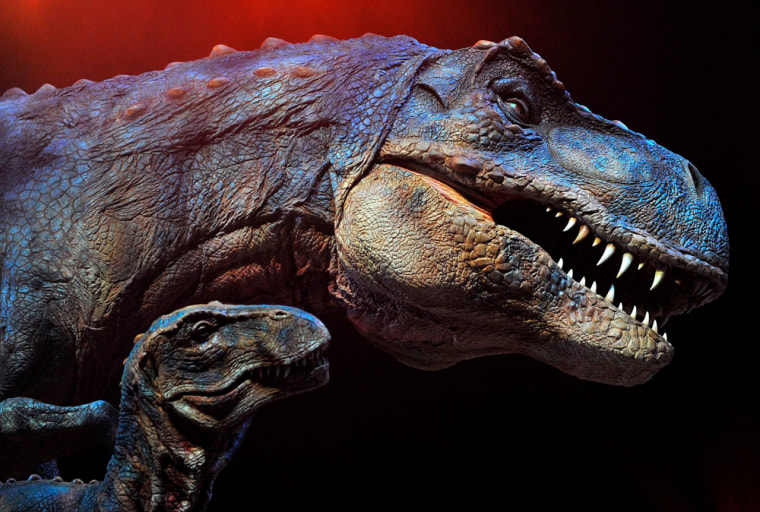When a giant asteroid slammed into the Yucatan Peninsula 65 million years ago, the results were devastating: rock and ocean water vaporized, searing debris flung into outer space, and a smoldering hole in the Earth almost 75 miles wide.
Scientists debate whether the cataclysm was enough to wipe out the dinosaurs. But a new set of experiments shows the impact produced a huge amount of carbon monoxide, a compound commonly found in car exhaust. The sudden pulse of gas may have been enough to cause a large spike in global temperatures, and trigger a mass extinction.
Yasuhito Sekine of the University of Tokyo and a team of researchers simulated the impact in miniature by firing small pieces of metal into chunks of calcite, a carbon-rich mineral common in the shallow seas of the Cretaceous period. The collisions vaporized their targets, and produced about twice as much carbon monoxide (CO) as carbon dioxide (CO2).
The team's research was published this month in the journal Earth and Planetary Science Letters.
Though not a direct greenhouse gas, carbon monoxide starts a cascade of chemical reactions in the atmosphere that can have huge consequences for global climate. It also promotes the production of nitric oxide (NO), which spawns ozone (O3), a greenhouse gas and poison when abundant near Earth's surface.
"The concentrations of CO and O3 formed after the Chicxulub impact are too low to kill animals and dinosaurs directly, but would cause weak health hazards to animals," Sekine told Discovery News. "The intense increase in O3 after the impact would have caused serious damage not only on plants themselves but also the whole ecosystem at that time."
"They might have a point that carbon monoxide is released on impact," Alexander Pavlov of the National Aeronautic and Space Administration's Goddard Space Flight Center said. "The issue is not what's coming out from impact, but how does it compare to the carbon dioxide coming from forest fires?"
A layer of ash found in in several parts of the world hints that the impact touched off a global firestorm that wiped out much of the planet's forests. If so, the amount of carbon dioxide released during those fires would dwarf any emissions from the impact itself.
"Even if they're right, the warming wouldn't have had that much of an effect," Pavlov said. He argues that the firestorm, along with a subsequent nuclear winter likely dominated global climate for the first few years after the impact, and played the biggest role in the extinction.
